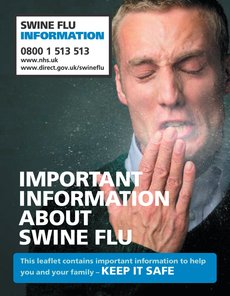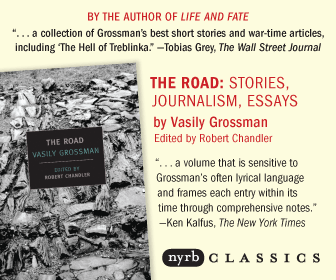In February 2009, a spike in influenza cases was detected in hospitals around Mexico City. Mexican government officials sent samples of throat cultures from patients to the US Centers for Disease Control (CDC) and the Canadian National Laboratory in Winnipeg, whose scientists found a new version of the H1N1 influenza virus, named for the type of hemagglutinin and neuraminidase molecules on its surface that enable it to spread within the body.
The discovery of what came to be known as “swine flu”—because pigs were the original source of the virus—aroused enormous concern in public health circles. The 1918 flu pandemic that killed tens of millions of people globally was also caused by an apparently new version of H1N1 influenza. Although other H1N1 viruses had been circulating in US populations for more than thirty years,1 the Mexican virus looked different and at first seemed to be especially aggressive. Soon the World Health Organization (WHO) began raising the alarm. Two billion people—one third of the global population—could contract the disease, the agency warned, and millions might die. World Bank economists suggested that the total cost of such a pandemic—counting lost business and increased health spending—could even reach 4.8 percent of global GDP.2
Panic spread throughout the world. In Mexico schools and offices were closed, flights were canceled, and the country lost $2.2 billion within a few weeks.3 In the UK, the government’s swine flu website received 2,600 hits per second and crashed soon after it opened; in New York so many people panicked over any flu-like symptom that hospital emergency rooms were swamped with ten times more patients than normal, worsening care for those who really needed it.4
In China and other countries, border nurses quarantined anyone with a fever seeking to enter the country. Even though direct pig-to-human influenza transmission is exceedingly rare, Egypt ordered the slaughter of all the pigs in Cairo, impoverishing thousands of Christian small-scale farmers. And in Afghanistan, the nation’s only pig was quarantined.5
On June 11, 2009, Margaret Chan, the director-general of the WHO, announced that a “pandemic emergency”—or worldwide epidemic—of H1N1 influenza was officially underway. Governments around the world placed immediate orders for anti-flu drugs and vaccines worth hundreds of millions of dollars, as a new stock index, *RXFLU, tracked company profits. According to J.P. Morgan, up to $10 billion was spent globally on “influenza preparedness” in 2009, including over $4 billion by the US alone.6
The predicted dire emergency did not occur. In the 2009–2010 “influenza season” about 18,000 people died from the disease worldwide, fewer than in previous years, and the vast majority of victims had serious underlying conditions such as cancer, lung disease, AIDS, or severe obesity, which can impair breathing.7 Since one influenza strain usually dominates all others during a typical flu season, H1N1 may actually have saved lives by displacing more aggressive viruses. The WHO maintains that its decisions were based on the best available evidence, but last year European governments, stuck with hundreds of millions of euros’ worth of unused medicines and vaccines, began asking questions.
In March 2010, a Council of Europe report8 concluded that the H1N1 virus was known to be mild well before the WHO issued the pandemic “declaration” and expressed concern about the influence of powerful pharmaceutical companies over decision-making at the agency. A draft of the WHO’s response was released in March 2011.9 It calls for more “transparency” but concludes that “no critic of WHO has produced any direct evidence of commercial influence on decision-making.” Unfortunately, the response does not account for the billions of dollars lost in the panic or for the lives that may have been put at risk by the agency’s hasty medical recommendations.
Although influenza deaths are relatively rare among those who aren’t otherwise ill, since the 1950s experts have periodically warned that a 1918-like pandemic could recur. They became especially alarmed in 1997, when eighteen people in Hong Kong contracted a new influenza virus known as H5N1 from chickens, and six died. This “avian flu” virus didn’t spread from person to person, but since it was a thousand times more lethal than ordinary influenza, some experts feared that if it mutated into a virus that could spread more easily, it would kill millions in a very short time.
In 1999, the WHO launched a program to help governments prepare for this terrifying, if unlikely, possibility. The agency produced a document urging governments to draw up plans to alert the public and set up mass vaccination programs in the event that a new “pandemic” virus was found to be spreading. Because such a virus would have been previously unknown, it would take around six months for sufficient quantities of vaccine to be produced. However, the document also contained an annex describing a new class of anti-influenza drugs known as “neuraminidase inhibitors” that might help control the pandemic.10
According to the annex, these drugs, by blocking the action of the neuraminidase protein, prevent the influenza viruses from spreading through the body, reducing the severity of symptoms. The drugs would also protect people who had been exposed to the disease, such as health care workers and relatives of patients, from becoming sick, or so the document suggested. In 1999, the manufacturers of these new drugs were still seeking approval from government regulators including the US Food and Drug Administration, but later editions of the WHO’s influenza pandemic guidance documents urged governments to “stockpile” them, because in an emergency their manufacturers might not have time to produce enough to meet demand.11
When H5N1 “avian flu” broke out again in Asia in 2003, this “stockpiling” recommendation led to a surge in influenza “pandemic preparedness” spending. In 2005–2006, the US and European governments stockpiled nearly $3 billion worth of the most popular neuraminidase inhibitor, known as Tamiflu.12 At $10–$15 a dose, few developing countries in Africa, Asia, and Latin America would be able to afford Tamiflu, but Margaret Chan, then assistant director-general of the WHO in charge of influenza pandemic coordination, joined by representatives from Hoffman–La Roche, Tamiflu’s Swiss manufacturer, urged Western governments to contribute to a Tamiflu stockpile fund for the developing world.13
After the 2009 “pandemic emergency declaration,” another scramble for the drug was soon underway, and annual Tamiflu sales surged to $2 billion.14 In Korea, rumors of shortages led HSBC and other powerful banks to compete with hospitals for stocks of the drug.15 Countries in Asia, Africa, and Latin America placed urgent Tamiflu orders from WHO’s stockpile, and some governments even took out loans worth tens of millions of dollars from the World Bank’s Avian and Human Influenza Facility to purchase it.16
Despite the panic over “avian flu,” ordinary influenza was still seen by most people as a mild disease, and most of the Tamiflu purchased in the US and elsewhere was probably “stockpiled” in warehouses and personal medicine cabinets, and not consumed. But in the early 2000s, Tamiflu was regularly prescribed in Japan, which accounted for over 60 percent of global consumption.17 It was there that signs of possible trouble with the drug first began to emerge.
Dr. Rokuro Hama runs the Japan Institute of Pharmacovigilance, an Osaka-based nonprofit group that monitors pharmaceutical product safety. In 2002, shortly after Tamiflu was introduced in Japan, he received a number of case reports of children who had begun behaving strangely within hours of taking it. A fourteen-year-old boy wandered out of his family’s ninth-floor apartment and jumped over an exterior railing to his death; a seventeen-year-old boy ran out of his house onto a nearby freeway, where he was killed by a speeding truck; a thirty-nine-year-old man and two three-year-old boys died suddenly in their sleep.
Hama wasn’t sure that these and the dozens of other similar cases he recorded were necessarily related to Tamiflu. Influenza itself can cause delirium and death in severe cases and the vast majority of those who took the drug suffered no ill effect. But when Hama studied the cases carefully, he realized that the neurological symptoms differed from those sometimes seen in severe influenza cases; rather, they more closely resembled symptoms associated with overdoses of drugs that suppress the central nervous system, such as Valium.18
In response to Hama’s case reports, the Japanese Ministry of Health, Labor, and Welfare commissioned a research team at Yokohama University to study 2,846 pediatric influenza patients, some of whom had taken Tamiflu. The Yokohama researchers reported that hallucinations and other neuropsychiatric symptoms were no more common among children who had taken the drug than among those who had not. When Hama looked closely at this analysis, he concluded there were a number of errors, most having to do with what epidemiologists call “misclassification”—such as cases in which children with hallucinations were classified as not having taken Tamiflu when they almost certainly had.19
Hama reanalyzed the Yokohama data and estimated that Tamiflu resulted in a fourfold increase in the frequency of hallucinations and other neuropsychiatric side effects in children with influenza.20 A journalist later alerted Hama to the fact that Chugai, the Roche subsidiary that markets Tamiflu in Japan, had provided funds for research to two of the scientists who worked on the Yokohama study. While there is no evidence of wrongdoing, such funding always raises the possibility of a conflict of interest.21
Shortly after the WHO “pandemic announcement” in June 2009, Keiji Hayashi, a Japanese pediatrician who was aware of Rokuro Hama’s alarming case studies, decided he wanted more information about the risks and benefits of Tamiflu. After all, if the drug really saved lives, it would be worth prescribing to his patients, despite the slight risk of severe side effects. But when Hayashi turned to the scientific literature, he found very few articles on the subject—and all of the research had been funded by Roche.
The most important paper, whose main author was Laurent Kaiser, a doctor at the Swiss Hôpital Cantonal de Genève, appeared in the Archives of Internal Medicine in 2003.22 This paper, based on a summary of ten studies, concluded that patients who took Tamiflu were 55 percent less likely to experience severe flu complications—such as pneumonia—and 50 percent less likely to need hospitalization than patients who didn’t take the drug. Since hospitalization is expensive, Kaiser’s finding suggested that the drug not only relieved suffering, it could also save money—an important consideration for governments considering the WHO’s advice to stockpile the drug.
While Kaiser’s finding seemed powerful, Hayashi was concerned that the drug’s entire reputation seemed to rest on this one article and a small number of others. He contacted Tom Jefferson, a British influenza expert with the Cochrane Collaboration, a British government–funded network of epidemiologists that conducts independent reviews of medical research. The Cochrane group had published a favorable review of Tamiflu in 2006, based largely on the same articles that Hayashi had read.23
When Jefferson and his colleagues read Hayashi’s letter, they too began to wonder whether their initial assessment had been correct. They noticed several ambiguities and errors in Kaiser’s article that they hadn’t recognized before. For example, the definition of “complications related to influenza” used by the doctors in the study was imprecise, which made it difficult to tell what the study was actually measuring; in addition, the high rate of influenza seen in the clinics where the trials were carried out also seemed odd. Normally, only about 15 percent of what seem like “flu” cases are actually found upon lab testing to be caused by the influenza virus—the others are caused by some other microbe. But in the clinics where the Tamiflu trials were conducted, up to 80 percent of flu-like illnesses were reported to have been caused by influenza itself, raising the possibility that the patients had been selected for some reason that wasn’t made clear in the article.24
-
1
See Joel C. Gaydos et al., "Swine Influenza A Outbreak, Fort Dix, New Jersey, 1976," Emerging Infectious Diseases , January 2006. In addition to those named in this article, I wish to thank Peter Doshi and Philip Alcabes for discussions. ↩
-
2
See Global Development Finance , the World Bank, 2009, Chapter 1, "Prospects for the Global Economy." ↩
-
3
Ioan Grillo, "Mexico's Swine Flu Battle Cry: A Return to Normal on Cinco de Mayo," Time , May 5, 2009. ↩
-
4
Anemona Hartocollis, "Lessons Learned, City Prepares for a Resurgence of Swine Flu," The New York Times, July 20, 2009. ↩
-
5
Jean MacKenzie, "Afghanistan's Only Pig Quarantined? Must Be Bad," GlobalPost.com, November 12, 2009. ↩
-
6
See Paul Flynn, "The Handling of the H1N1 Pandemic: More Transparency Needed," Social, Health and Family Affairs Committee, Council of Europe, March 23, 2010; and Jeff Levy, "Did the World Health Organization Exaggerate the H1N1 Flu Threat?," New Jersey News Room , June 10, 2010. ↩
-
7
See, for example, Ellen H. Lee, "Fatalities Associated with the 2009 H1N1 Influenza A Virus in New York City," Clinical Infectious Diseases , June 1, 2010. ↩
-
8
See Flynn, "The Handling of the H1N1 Pandemic." ↩
-
9
See "Preview: Report of the Review Committee on the Functioning of the International Health Regulations (2005) and on Pandemic Influenza A (H1N1) 2009," World Health Organization, March 7, 2011. ↩
-
10
See "Influenza Pandemic Plan: The Role of WHO and Guidelines for National and Regional Planning," World Health Organization, April 1999; and Andrew Jack, "WHO in Plan for Flu Drugs Stockpile in Asia," Financial Times , November 14, 2005. ↩
-
11
See "Pandemic Influenza Preparedness and Response: WHO Guidance Document," World Health Organization, April 2009. ↩
-
12
Andrew Jack, "Feeling the Strain," Financial Times , September 2, 2006. ↩
-
13
Andrew Jack, "WHO Aims to Set Up Bird Flu Drugs Pool," Financial Times , November 14, 2005. ↩
-
14
Andrew Jack, "Roche and Glaxo Team Up to Test Rival Swine Flu Drugs," Financial Times , September 8, 2009. ↩
-
15
Bomi Lim and Sangim Han, "Roche, HSBC, Novartis Probed by Korea FDA on Tamiflu (Update 1)," Bloomberg, November 6, 2009. ↩
-
16
http://web.worldbank.org/WBSITE/EXTERNAL/TOPICS/EXTAVIANFLU/ 0,,contentMDK:21355695~isCURL:Y~menuPK:3642531~pagePK:210058~piPK: 210062~theSitePK:3124441,00.html ↩
-
17
See Jack, "Feeling the Strain." ↩
-
18
See Rokuro Hama, "Fatal Neuropsychiatric Adverse Reactions to Oseltamivir: Case Series and Overview of Causal Relationships," International Journal of Risk & Safety in Medicine , 2008. ↩
-
19
See Hama, "Fatal Neuropsychiatric Adverse Reactions to Oseltamivir." ↩
-
20
See Hama, "Fatal Neuropsychiatric Adverse Reactions to Oseltamivir." ↩
-
21
See Ichiko Fuyuno, "Tamiflu Side Effects Come Under Scrutiny," Nature , March 22, 2007. ↩
-
22
Laurent Kaiser et al., "Impact of Oseltamivir Treatment on Influenza-Related Lower Respiratory Tract Complications and Hospitalizations," Archives of Internal Medicine , July 28, 2003. ↩
-
23
Tom Jefferson et al., "Antivirals for Influenza in Healthy Adults: Systematic Review," The Lancet , January 28, 2006. ↩
-
24
See Peter Doshi, "Neuraminidase Inhibitors—The Story Behind the Cochrane Review," British Medical Journal , December 8, 2009. ↩







